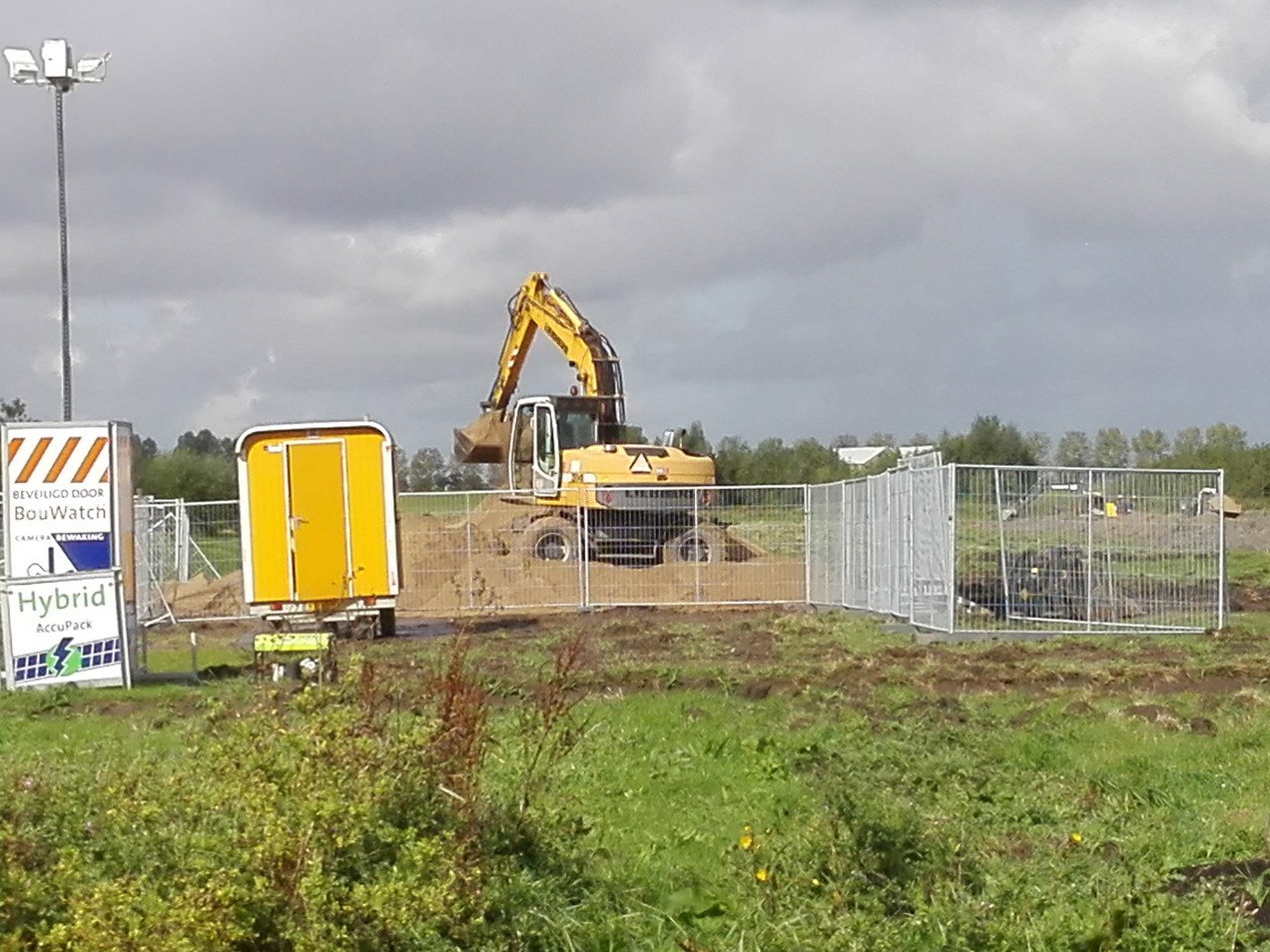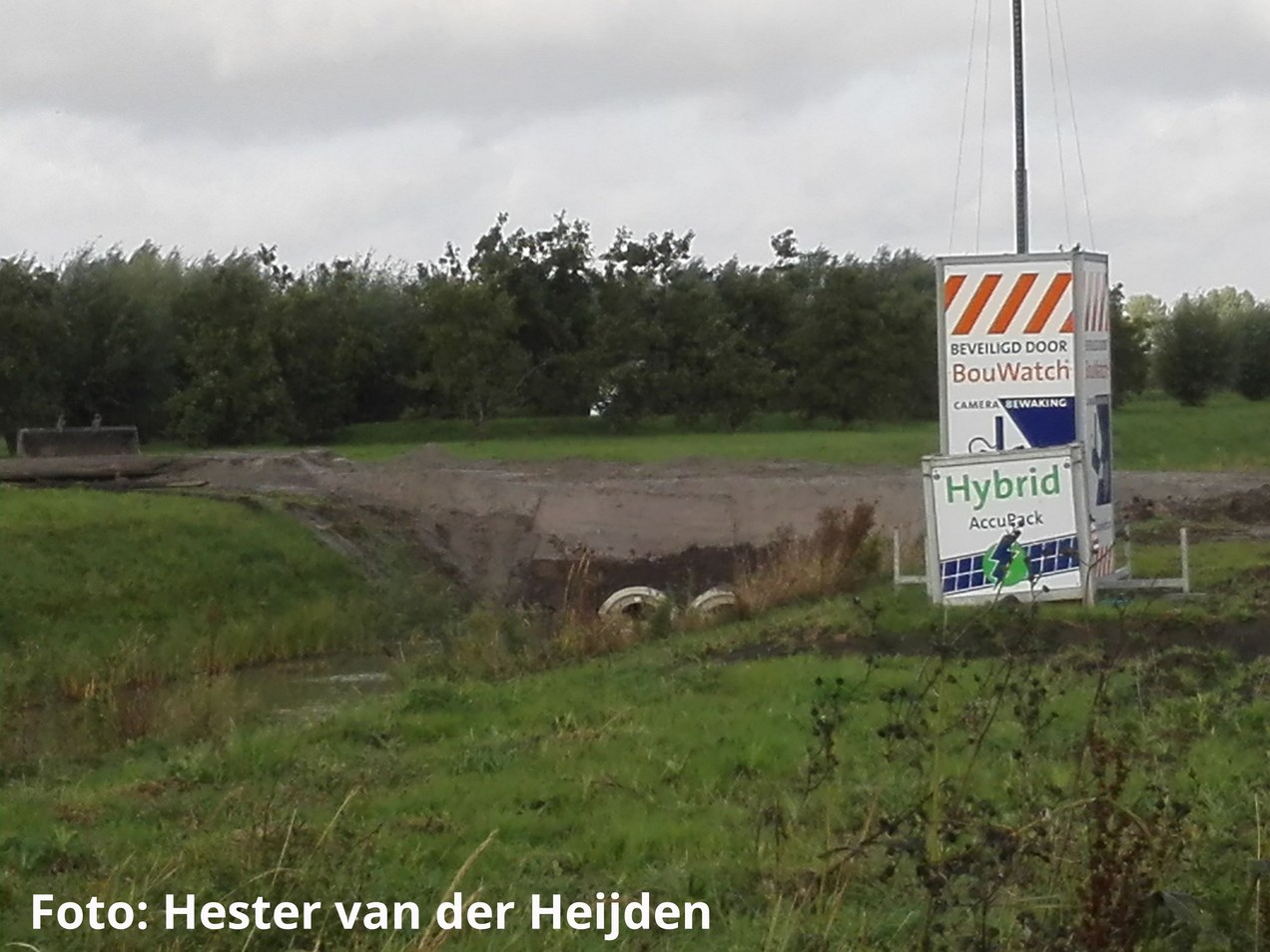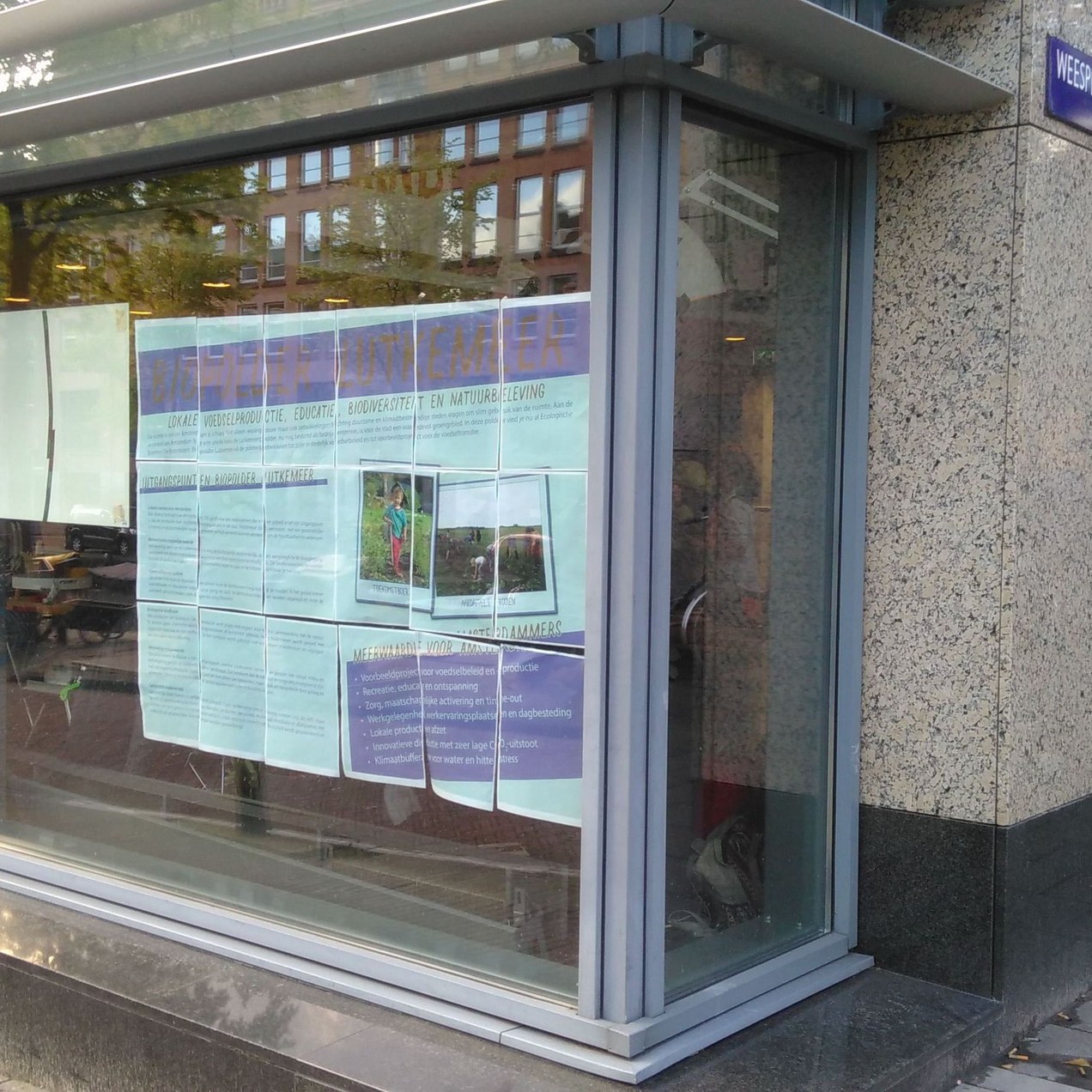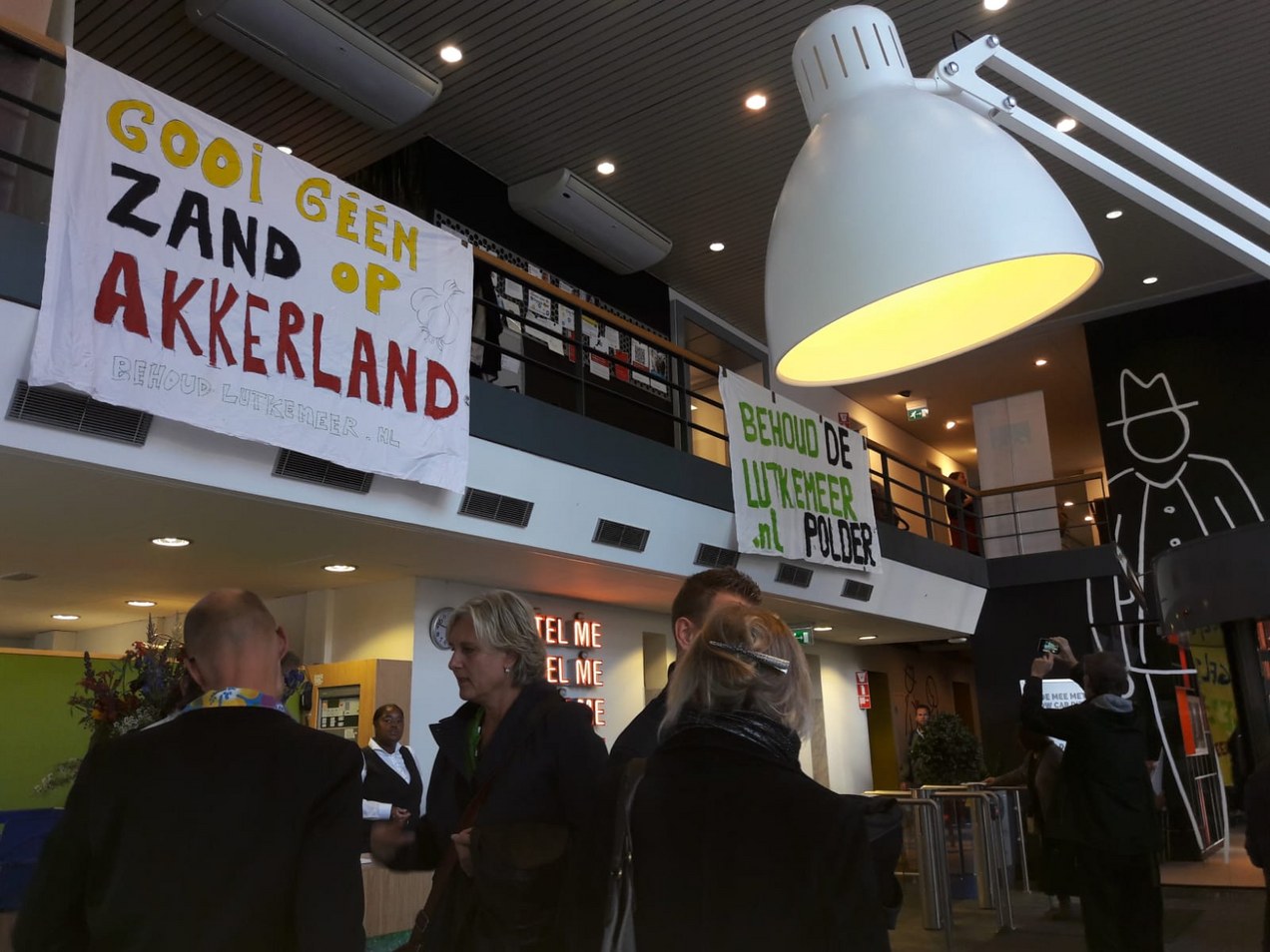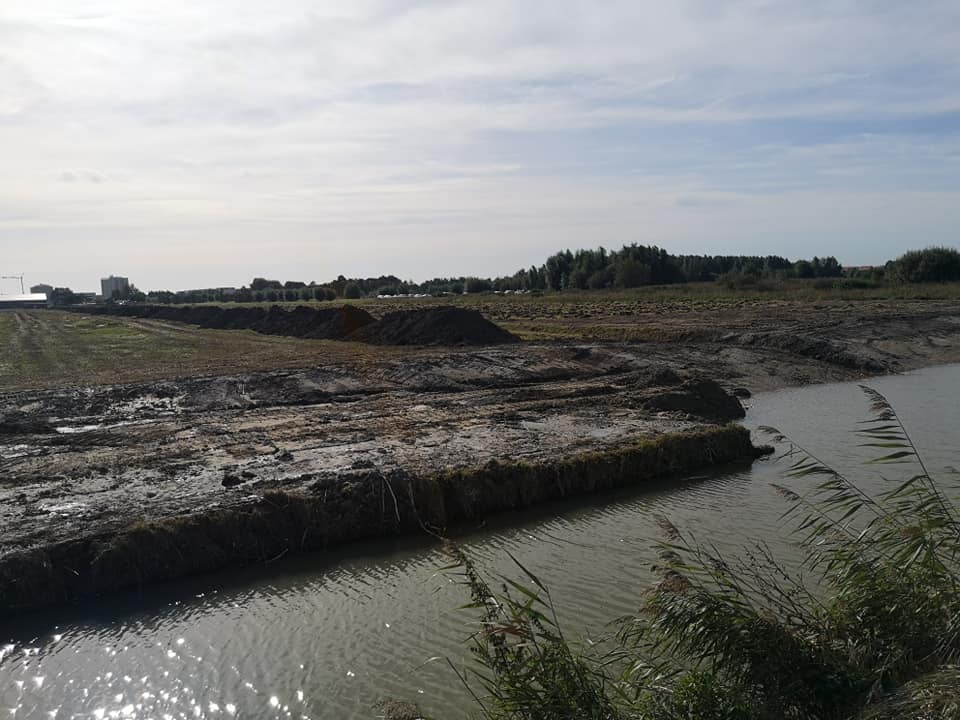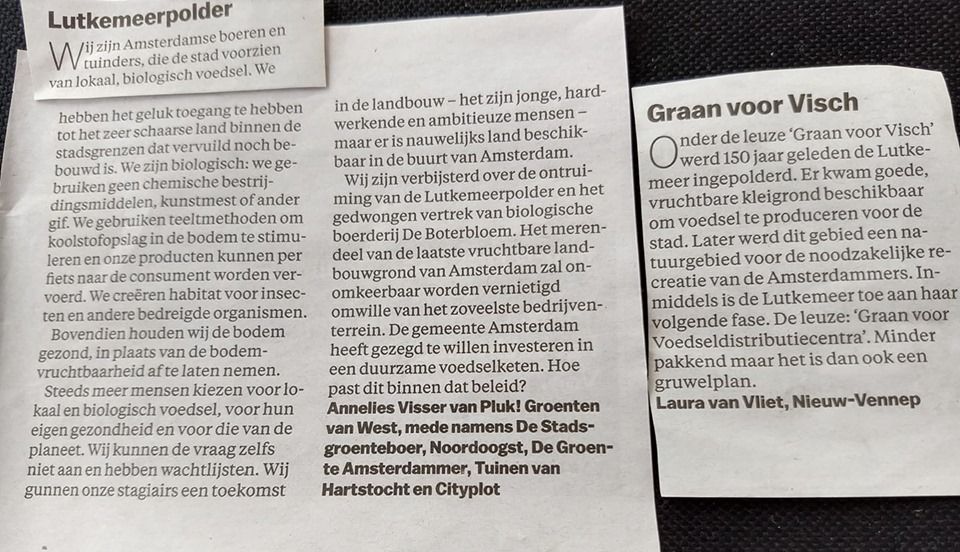Angst

Angst
nieuwsbrief 12 lutkemeer
|
![]()
We are here: gemeente Amsterdam ontruimt ondanks belofte niet te ontruimen voor leegstand
Risk of deportation
FRANÇAIS plus bas
Gibril is a person from Sudan detained since February, 26th, in the administrative detention center (CRA) of Coquelles (near Calais, just across the street of the EuroTunnel terminal). He was transferred there after having been arrested for a minor offence roughly a month before, and was made to see the embassy of Sudan in order to be deported to his home country, country that he fled to find freedom and safety.
As often happens for foreigners, especially but not only those without papers, regardless of the sentence given at the trial for the crime they are accused of, France delivers them an interdiction of territory justified by risks of public disorder.
Leave France, destination: Sudan.
A., older man from Sudan, was arrested during an attempt to cross to the UK and is also detained in Coquelles CRA as we write. Like Gibril, he has already been presented to the embassy, embassy that once recognized the person as from the country they represent, can deliver a document that allows the deportation to take place.
In these days of protests and demonstration of solidarity and rage from many cities in Europe to highlight the repression of dictator aL-bAshir, France, the country of human rights, attempts to deport two people back to Sudan. And that’s the ones we know about.
Despite the many reports on the situation in Sudan along the past years, it is not an isolated case, and several people have been deported also to other countries considered “not safe” such as Iraq and Afghanistan.
Thanks to the new Asylum Law, since January the amount of time that people can be detained has doubled from 45 to 90 days, which is to say 3 months.
Down with detention centers, prison-like places for people without “the right” documents. Support Gibril and A. and all other folks in detention.
a testimony from Gibril, published with his permission:
“Anything but not going back to Sudan. I am in danger there, for me is not safe.
I want to be free, I came here (in Europe) for this. I wanted to go to the UK but they arrested me in Calais because they said I committed a crime. I found it unjust, but it all went really fast. They put me in jail for around one month. Then they told me I was gonna be deported. But the punishment of that crime, I am sure still is not death sentence, because that is it if they deport me to Sudan.“
What you can do:
Call on the Minister of the Interior to call for an end to the expulsion: sec.immigration@interieur.gouv.fr ” style=”margin: 0px; padding: 0px; border: 0px; outline: 0px; vertical-align: baseline; background-position: 0px 0px;”>sec.immigration@interieur.gouv.fr
Write a message or telephone the prefect of Pas-de-Calais, Fabien Sudry, responsible for the order to leave France that creates the ground for the deportation to happen, to ask him to cancel it:
pas-de-calais.gouv.fr/Contactez-nous ” style=”margin: 0px; padding: 0px; border: 0px; outline: 0px; vertical-align: baseline; background-position: 0px 0px;”>Contact form: http://pas-de-calais.gouv.fr/Contactez-nous
Phone: 03.21.21.20.00fabien.sudry@pas-de-calais.pref.gouv.fr ” style=”margin: 0px; padding: 0px; border: 0px; outline: 0px; vertical-align: baseline; background-position: 0px 0px;”>
Contact the company Qatar Airways, that commonly lets deportation happen on their flights to countries such as Sudan. You can call its Paris office or go there to explain your point of view on their participation in these expulsions.
www.facebook.com/qatarairways ” style=”margin: 0px; padding: 0px; border: 0px; outline: 0px; vertical-align: baseline; background-position: 0px 0px;”>You can also contact them on facebook.
FRANÇAIS
Gibril est une personne soudanaise détenue depuis le 26 février dans le centre de rétention administrative (CRA) de Coquelles (près de Calais, juste en face du terminal EuroTunnel). Il y a été transféré après avoir été arrêté pour un délit mineur il y a environ un mois et a été contraint de se rendre à l’ambassade du Soudan pour être déporté dans son pays d’origine, pays qu’il a fuit pour chercher la liberté et la sécurité.
Comme cela arrive souvent aux étrangers, en particulier (mais pas uniquement) à ceux qui sont sans papiers, quelle que soit la peine prononcée au procès pour le crime dont ils sont accusés, la France leur impose une interdiction de territoire justifiée par des risques à l’ordre public.
Quitter la France, destination: Soudan.
A., un homme âgé du Soudan, a été arrêté alors qu’il tentait le passage pour rejoindre le Royaume-Uni. Il est également détenu au CRA de Coquelles au moment où nous écrivons. Comme Gibril, il a déjà été présenté à l’ambassade, qui, une fois qu’elle a reconnue la personne comme étant originaire du pays qu’elle représente, peut délivrer un laisser-passer permettant la déportation.
En ces jours de manifestations , de solidarité et de rage dans de nombreuses villes d’Europe pour dénoncer la répression du dictateur Al-Bachir, la France, pays des droits de l’homme, tente de renvoyer ces deux personnes au Soudan.
Malgré les nombreuses enquêtes publiées au cours des dernières années, il ne s’agit pas de cas isolés, et de nombreuses personnes ont été déportées vers le Soudan, ainsi que vers d’autres pays considérés “à risque”, tels que l’Irak et l’Afghanistan.
La nouvelle loi Asile a doublé la durée maximale de rétention administrative, passant de 45 à 90 jours, soit trois mois, au 1er janvier 2019.
A bas les centres de rétention, qui sont des prisons pour les personnes qui n’ont pas les “bons” documents. Soutenez Gibril, A. et tou-te-s les autres retenu-e-s.
Un témoignage de Gibril, que l’on publie avec son accord
“N’importe quoi mais pas retourner au Soudan. Je suis en danger là-bas, je n’y suis pas en sécurité.
Je veux être libre, je suis venu ici (en Europe) pour ça. Je voulais aller au Royaume-Uni mais ils m’ont arrêté à Calais parce qu’ils disaient que j’avais commis un crime. J’ai trouvé cela injuste, mais tout s’est passé très vite. Ils m’ont mis en prison pendant environ un mois. Puis ils m’ont dit que j’allais être déporté. Mais la punition de ce crime, je suis sûr que ce ne doit pas être une condamnation à mort, alors que c’est le cas si on me déporte au Soudan. “
Ce que vous pouvez faire – et cela a déjà marché par le passé:
sec.immigration@interieur.gouv.fr, 01 49 27 49 27
premier-ministre@pm.gouv.fr
Écrire à la compagnie Qatar Airways, auprès de laquelle sont généralement réservés les vols pour les expulsion vers de pays comme le Soudan. Vous pouvez téléphoner à son agence de Paris ou vous y rendre pour expliquer courtoisement votre point de vue sur leur participation à ces expulsions.
Vous pouvez aussi l’interpeller sur facebook.
ADM persbericht
PERSBERICHT
Amsterdam 9 januari 2019
Gemeente Amsterdam constateert grootschalige vernietiging Gemeenschap ADM
Burgemeester Halsema van Amsterdam heeft vandaag via buurtregisseur Ferry den Edel en de zichtbaar aangedane ambtenaar Ivar Schreurs de constatering ontvangen dat het merendeel van de aan onze Gemeenschap ADM behorende, woningen, eigendommen en werkplaatsen gisteren ‘door derden’ zijn vernietigd.
De door gemeente Amsterdam uitgevoerde ‘ontruiming onder bestuursdwang’ is niet alleen in strijd met het internationaal recht, de VN interim measure waaraan Nederland plichtig is (oa Weens Verdragenverdrag artikel 26), maar was tevens een niet verdedigbare uitvoering van een ontruiming onder bestuursdwang zoals genoemd in ons nationaal recht.
Want nadat de gemeente de ontruiming half had uitgevoerd, door ons van ons terrein te verwijderen maar de goederen van onze Gemeenschap niet, werd het terrein inclusief onze goederen overgedragen aan een derde partij, de kadastrale eigenaar van het terrein, Chidda Vastgoed waarmee de gemeente de ontruiming onder bestuursdwang niet voltooide.
Chidda Vastgoed had hiervoor een helder plan klaarliggen want onmiddellijk werden er vele bulldozers, hijskranen en graafmachines van huurder Koole Maritiem het terrein opgereden en deze toverden onze buurtschap in enkele uren om tot een waar slagveld. Zij vernielden of vernietigden vele woningen en goederen. Gistermiddag werd dit door de gemeente stopgezet.
Maar laten we wel zijn. De verantwoordelijkheid voor onze eigendommen lagen en liggen bij de gemeente. Wij zijn van mening dat dergelijk geweld tegen een Gemeenschap, mogelijk gemaakt door de staat, buiten Nederland onmiddellijk veroordeeld zou worden OOK als hier geen dwingende interim measure van de VN op zou liggen. Maar het is ons inmiddels duidelijk dat onze Gemeenschap ADM enerzijds door de VN erkend wordt als leefgemeenschap maar dat deze in Nederland door zowel de pers als de gemeente steevast met ‘de krakers’ benoemd wordt omdat onze gemeenschap zo 21 jaar geleden geboren werd. Maar hoe de gemeenschap ontstond doet er niet toe.
Pas na de rechtszaak van gisterochtend begon de gemeente in te zien dat zij mogelijk stom is geweest en dat deze schade daadwerkelijk op hen verhaald zal worden. De ontruiming en de vernieling zijn beiden onrechtmatig en wij hebben dan ook de aanvullende eis gedeponeerd dat de gemeente ons niet alleen terug dient te laten keren naar de ADM, op basis van de interim measure van de VN, maar tevens ervoor dient te zorgen dat de schade ongedaan wordt gemaakt, dan wel dat er vergelijkbare vervangende woonruimte komt.
Terwijl onze bewoners vandaag onder de dreigende ogen van de op het terrein aanwezige ‘bouwvakkers’ nog enkele goederen en huisdieren trachten te redden, vraagt de wereld zich af hoe het mogelijk is dat gemeente Amsterdam en de Nederlandse regering de 2 gevraagde maatregelen van de Verenigde Naties compleet aan de laars lappen.
Zowel bij aanvang van de ontruiming als vandaag werd door onze advocaat mr. Tamas een ‘verzoek om maatregel van orde’ ingediend om de ontruiming te stoppen maar beiden werden door (dezelfde) rechter geweigerd omdat ‘de bewoners niet in levensgevaar zouden zijn’. Daarmee negeerde de rechter de VN interim measure.
Uiteindelijk moest de wrakingkamer bijeenkomen en wordt in de loop van de week duidelijk welke rechter gaat oordelen over de vraag of de Nederlandse staat zich aan de door haarzelf ondertekende verdragen moet houden. Dat is, op dit moment, de enige vraag die voor ligt.
Wij, 130 bewoners, volwassenen en kinderen mét hun huisdieren en de spullen die we hebben kunnen redden, zwerven nu dakloos door de stad.
Wij zijn een hechte gemeenschap en zien er, ondanks alles, naar uit om terug te keren naar onze geliefde ADM.
the white rider
(Het leuke van … is
Tweede schrijven van de verenigde naties aan ADM
A new communication by the UN’s Human Rights Committee was received by ADM. This was of course to be expected after Amsterdam Municipality’s cynical “pre-announcement” of the upcoming violation of the HRC’s interim measure, and its circular stating that it abides with international Law.
“Dear Madam,
The Section would like to acknowledge receipt of the additional information you provided which has been shared with the Human Rights Committee. On that basis, the request for interim measures sent on 26 December has just been reiterated. In a correspondence sent a while ago, the Committee is requesting the authorities of the Netherlands to provide it with clarification about the compatibility of the planned evacuation to the sludge fields, at this time of the year, with international standards, addressing in particular concerns raised about soil contamination, lack of adequate heating, the existing capacity of the sanitary infrastructure, the impossibility for those currently living on boats to move them to the new site and the safeguards afforded to unregistered residents. The Committee gave 2 months to the State party to submit this clarification.
In the meantime, the State party was again requested not to evict the authors to the sludge fields or to anyplace else in which conditions fall short of international standards, especially with respect to vulnerable individuals.
Best regards,
Office of the United Nations High Commissioner for Human Rights”



